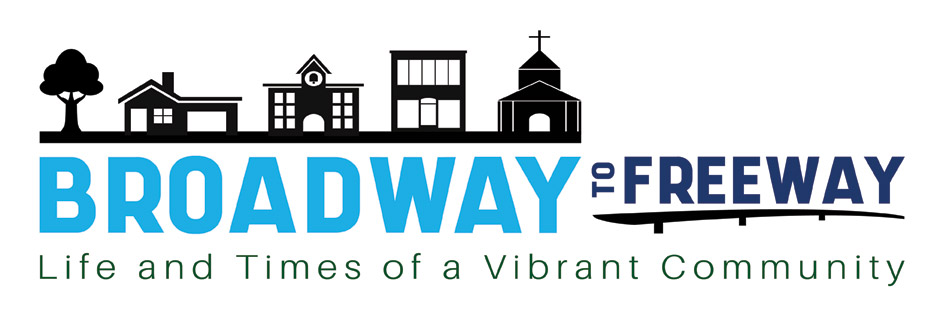
Celebrating Santa Monica’s Black History
View full article on Santa Monica Daily Press
Argonaut News
The Santa Monica Star
Santa Monica, Calif. – March 30, 2022
There’s always more than meets the eye in Santa Monica, a community with a deep and sometimes complex history often overshadowed by swaying palm trees and upscale eateries. But the folks at the Santa Monica History Museum (SMHM) are on a mission to show locals and visitors alike a new perspective on their beloved small town.
After a two-year closure, the small but mighty museum reopens on Friday with a new temporary exhibition, Broadway To Freeway: Life and Times of a Vibrant Community, highlighting Santa Monica’s historic Broadway neighborhood, a thriving African American and Mexican American community that was bisected and eventually destroyed after the creation of the Santa Monica (I-10) Freeway in the late 1950s.
The freeway razed many city blocks of houses, as well as dividing the residential area from the Broadway business district. It also led to the closure of Garfield School, which most of the children of color in Santa Monica attended.
According to SMHM archivist and exhibit curator Sara Crown, for most of those families, leaving Santa Monica meant never returning.
“Even at that time, Santa Monica was considered expensive, and so if you lost your home here, it was very difficult,” Crown said. “Housing was limited; we also see that post World War II with the Japanese Americans who were forced to leave. Almost none of them were able to return to the city because there was a housing shortage at the time.”
So, the exhibition seeks to breathe life into the oral histories and remaining ephemera from the once-vibrant Broadway neighborhood.
“A lot of times people go up and down the streets here in Santa Monica, and they might see the same buildings or the same businesses, but they don’t always know that previously, there was something there before it,” Carolyne Edwards, co-founder of the nonprofit Quinn Research Center, said. “And it would be nice for people to be able to relate to those spots here in Santa Monica, and to know the actual history, so that when they go up and down the streets now they will be able to see it in a different light and a different context.”
Edwards, who grew up in Santa Monica and continues to have deep roots in the community, including active involvement with the First AME Church (which was originally located at 20th Street and Broadway), founded the Quinn Research Center along with her husband Bill, in tribute to her late uncle, prominent Santa Monica community member and educator Dr. Alfred T. Quinn.
It was largely through Quinn’s legacy, including an extensive collection of historical artifacts, that SMHM and the Quinn Research Center were able to create the current exhibition, which features photographs, journal entries, newspaper clippings and even a song about the old Broadway neighborhood, primarily located between 13th and 20th streets.
SMHM shut down due to the pandemic. Then came the summer of 2020 and the murder of George Floyd, ushering in a national reckoning over race and racism in America. Crown said those conversations were happening among SMHM staff as well, leading to the formation of a diversity, equity and inclusion committee to discuss ways to refocus the museum’s perspective on communities of color.
Crown said that, as a small museum, SMHM usually relies on donated photos and artifacts, or community members coming to them with stories. Because of that, curators have rarely focused their lens on marginalized or underrepresented communities.
“We haven’t done an exhibition that specifically focuses on a community of color in Santa Monica,” Crown said. “We’ve talked about it in the past, but we have not done it. So, this is really exciting for us and we hope that people will enjoy it and feel welcome when they come here.”
Edwards said the portion of the exhibition about Garfield Elementary was of particular interest to her. One corner of the exhibit space is dedicated to photos and placards about the school.
Due to precise zoning, according to the gallery description, Garfield Elementary was designed to educate the majority of children of color and recent immigrants living in Santa Monica in the early 20th century — kids of Mexican, Chinese, Japanese, Russian, Italian and African American heritage. That way, white “American” children in the community could attend majority-white elementary schools.
It was there that Quinn was hired as the city’s first African American teacher, at a time when nearly three-quarters of students at the school were African American. Garfield is also where Edwards went to school and, as her neighborhood gathering place for children, where she spent many summer days playing with friends.
“My sisters and I used to frequent the playground during the summer between nine and three o’clock, and that was a big part of our lives,” Edwards said. “My mother would pack us a lunch and we’d spend the whole day there.” At Garfield, kids could get hot dogs and watch movies, learn square dancing, and rent toys, puzzles, and books from a bungalow on the property.
“There were just a lot of enjoyable planned activities for young people to do rather than just having idle time,” Edwards said.
Garfield School, shuttered in 1958, was located at 16th Street and Colorado, the site now occupied by school district headquarters.
Bill, who didn’t grow up in Santa Monica but who first came to the city in the 1950s, said two photos in the exhibition really spoke to him: picturing one of the Broadway community’s elders, the late Celestine Clisby Ellis, whom everyone knew as Miss Suzie. The first photo shows Miss Suzie at about three years old in 1930, posing in front of a young tree at 18th and Broadway; the second photo, taken 80 years later in 2010, shows Miss Suzie in front of the now-monumental tree trunk — a testament to the deep roots of the African American community that once lived and owned businesses along that stretch of Broadway.
“Eventually, if things go like we planned for it to go, I would like to put some kind of plaque in her honor with her name on that tree, naming it her tree,” Bill said.
You can see the photos of Miss Suzie, read about Garfield School and learn much more about the Broadway neighborhood at the Santa Monica History Museum, reopening Friday, April 1. New hours will be Thursday from 3-8 p.m. and Friday through Sunday from 11 a.m.-5 p.m. Free admission will be offered for the months of April and May.
emily@smdp.com



